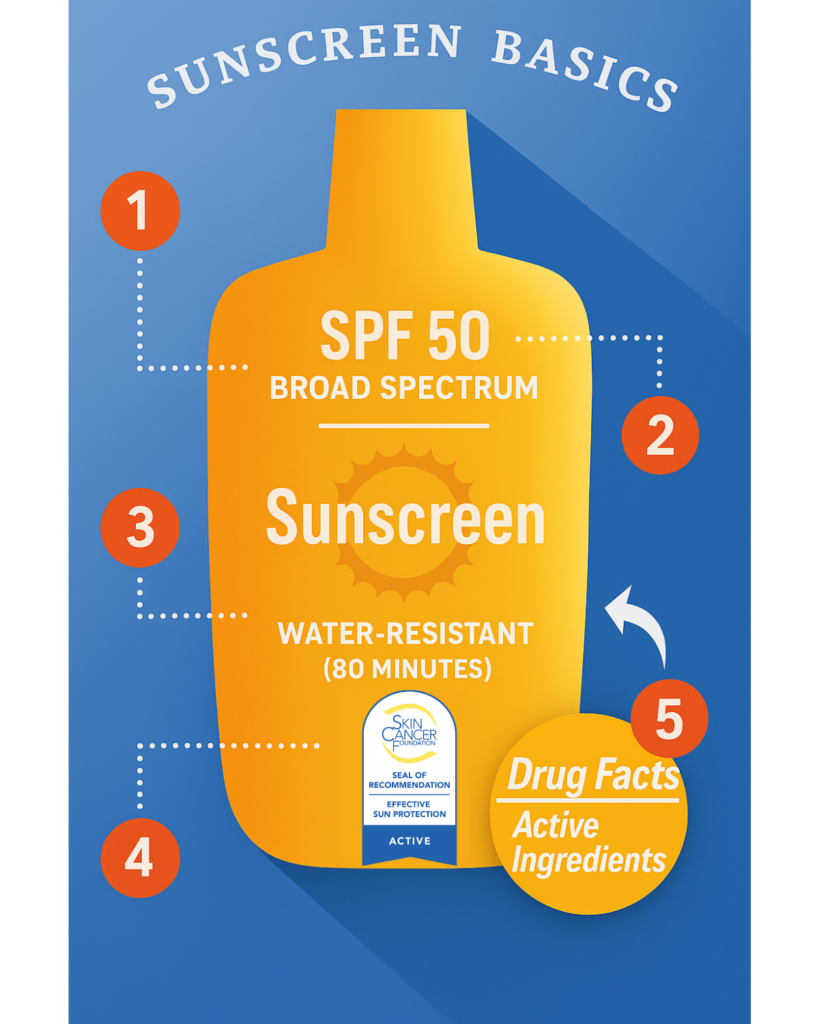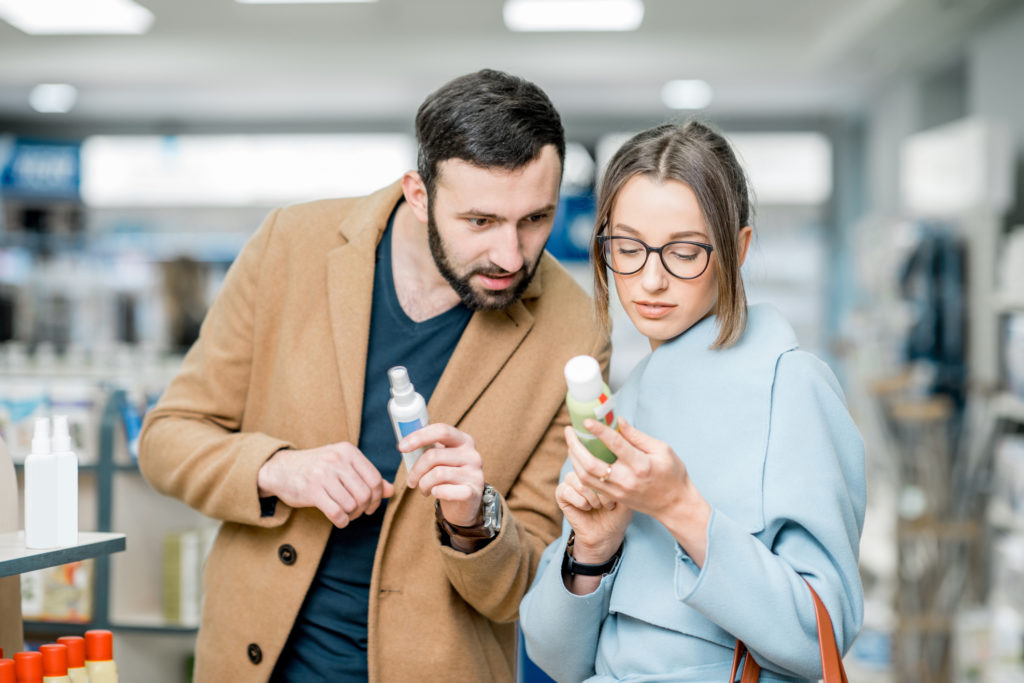Reading a sunscreen label shouldn’t be like deciphering a foreign language. But a study in JAMA Dermatology found that many people don’t understand how to read a sunscreen label or how the product protects the skin. Only 43 percent of survey respondents understood the meaning of an SPF value.

Given these findings, we considered it a good time to brush up on sunscreen basics. Here are explanations of key terms appearing on sunscreen labels that you should understand when selecting a product:
- Broad Spectrum: It’s essential for your sunscreen to offer broad spectrum protection, which means that it offers effective protection against both UVA (ultraviolet A) and UVB (ultraviolet B) rays, the solar wavelengths proven to damage the skin. UVA rays penetrate the skin more deeply than UVB, and are the chief cause of wrinkles, sagging and other signs of aging. UVB rays damage the skin’s upper surface and are the main cause of sunburn. Both cause skin cancer.
- Sun Protection Factor (SPF): SPF is a measure of how long a person can stay in the sun before its UVB rays start to burn the skin. Let’s say with no sunscreen, your skin starts to redden in 20 minutes. An SPF 30 will theoretically allow you to stay in the sun 30 times longer without getting burned. But keep in mind that SPF numbers are determined in a lab. In the real world, no matter what the SPF, sunscreens start to lose effectiveness over time, so it’s important to reapply every two hours and after swimming or heavy sweating. Also note that above SPF 50 the amount of additional sun protection is negligible. The Skin Cancer Foundation recommends always using a broad spectrum sunscreen with an SPF of 30 or higher – SPF 50 or higher for extended stays outdoors.
- Water-resistant: The terms “water-resistant” and “sweat-resistant” indicate whether the sunscreen remains effective for 40 minutes or 80 minutes when you are swimming or sweating. Since no sunscreen is fully “waterproof” or “sweatproof,” the FDA prohibits these terms.
- The Skin Cancer Foundation Seal of Recommendation: Look for our Seal to assure yourself that a product is safe and effective. Scientific data for each product that is submitted for the Seal of Recommendation is reviewed by a volunteer committee of renowned photobiologists — experts in the study of the interaction of ultraviolet radiation and the skin. The Daily Use Seal is earned by sunscreens that protect against brief everyday sun exposures, the kind you experience walking to the car or running errands. The Active Seal is earned by sunscreens that protect against prolonged sun exposure, like when you’re exercising outdoors or spending the day at the beach.
- Active ingredients: This area of the label, often on the back of the bottle, lists the main ingredients in sunscreens that protect your skin against UV rays. There are two main types of active sunscreen ingredients: chemical and physical. Chemical ingredients such as avobenzone and benzophenone, work by absorbing UV like a sponge, reducing its penetration into the skin, whereas physical ingredients such as titanium dioxide and zinc oxide stay on top of the skin and reflect and scatter UV rays. Many sunscreens available today combine chemical and physical ingredients.





